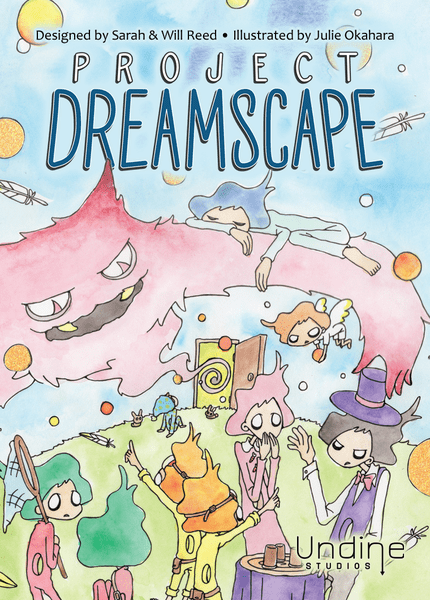Project Dreamscape (2015) Board Game
Project Dreamscape is a card game released in 2015, designed by Sarah Reed and Will Reed. The game is set in a science fiction world where players compete to create the most efficient dreamscape. The game has received positive reviews for its unique gameplay mechanics and engaging theme.
Game Components of Project Dreamscape
How To Setup Project Dreamscape
To set up the game, shuffle the sleep deck and give each player one Z card, which remains face down in front of them. Stack the remaining cards in the center of the table, leaving space for a face-up discard pile. Place the numbered tokens below the dreamscape cards, starting from 5 on the side closest to the draw deck. These tokens represent the cost of the cards, which will change round-to-round.
Gameplay Mechanics and Game Objective
Game Objective
Gameplay Mechanics
Player Experience
Project Dreamscape initially presents itself as a light, easy-to-learn game but quickly reveals its depth in strategy. Players must plan several turns ahead to build the longest chains of dream types, while also considering the special actions of each card. The game encourages strategic thinking and adaptability, as players can disrupt their own or opponents’ chains using various card abilities. The beautifully dreamlike illustrations by Julie Okahara add to the game’s unique atmosphere.
Pros
Cons
Personal Thoughts on Project Dreamscape
Project Dreamscape is ideal for players who enjoy strategic card games with a mix of planning and adaptability. It is suitable for both casual players looking for a fun, light game and more dedicated tabletop enthusiasts seeking a challenge. The game’s ability to balance simplicity with depth makes it an excellent addition to any card game collection. However, it may not be the best fit for those who prefer games with minimal complexity or those who find it difficult to remember multiple card abilities and rules.
We are supported by our audience. When you purchase through links on our site, we may earn an affiliate commission, at no extra cost for you. Learn more.

